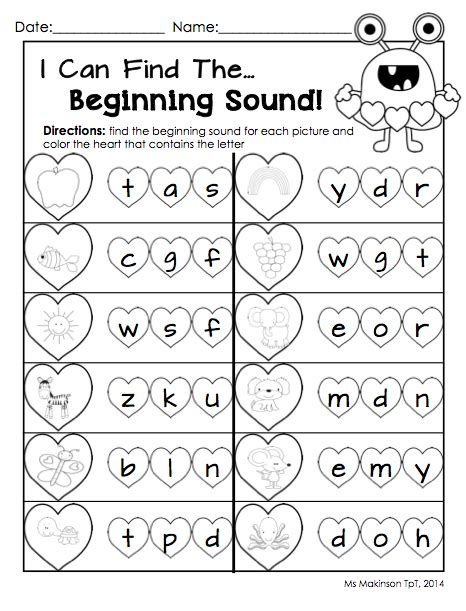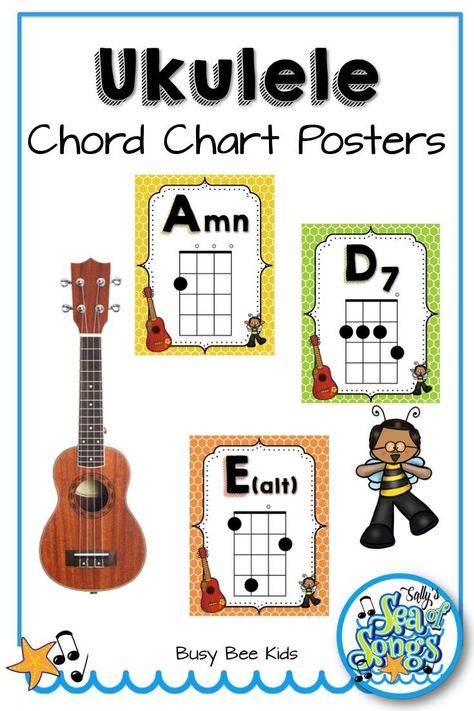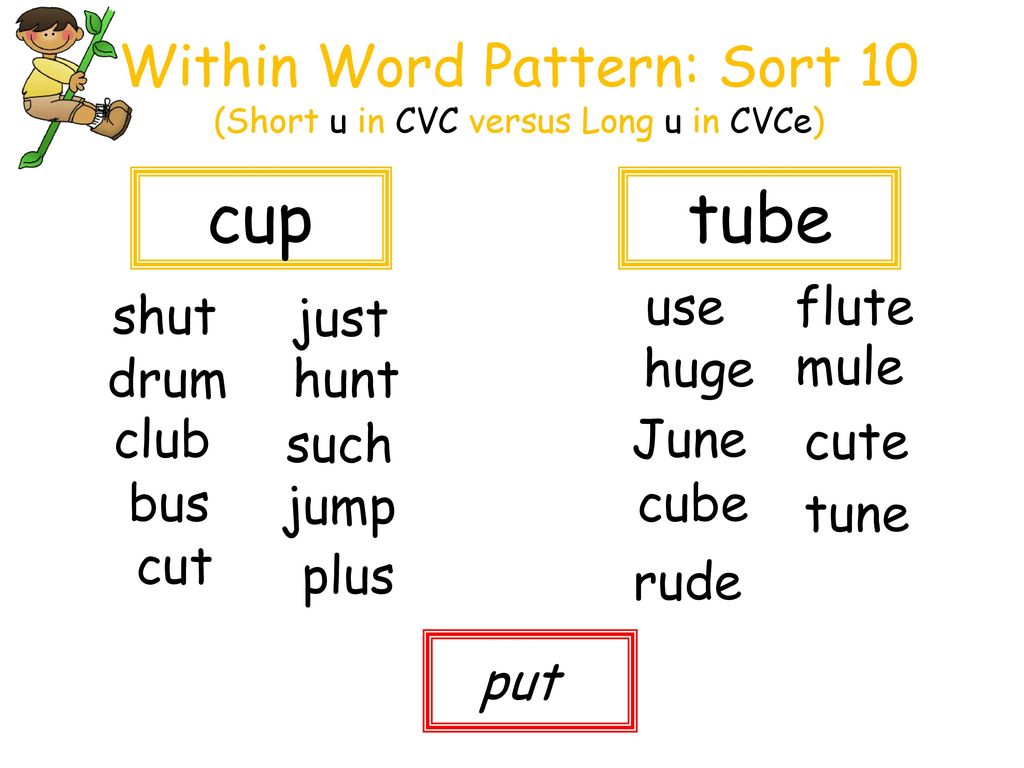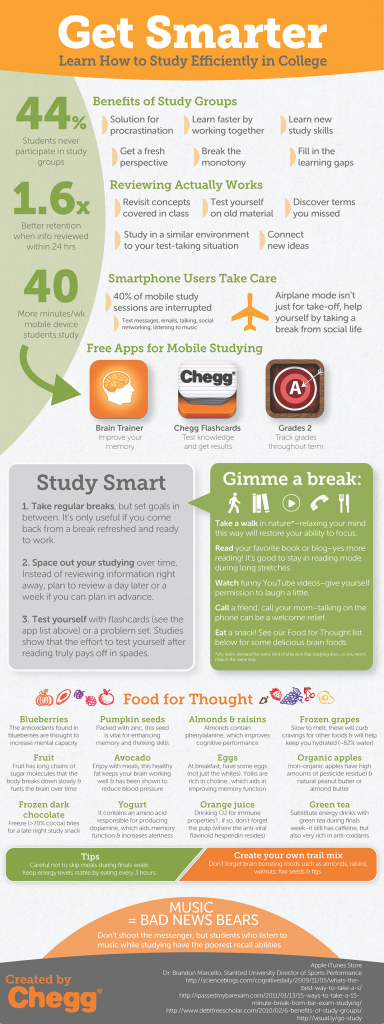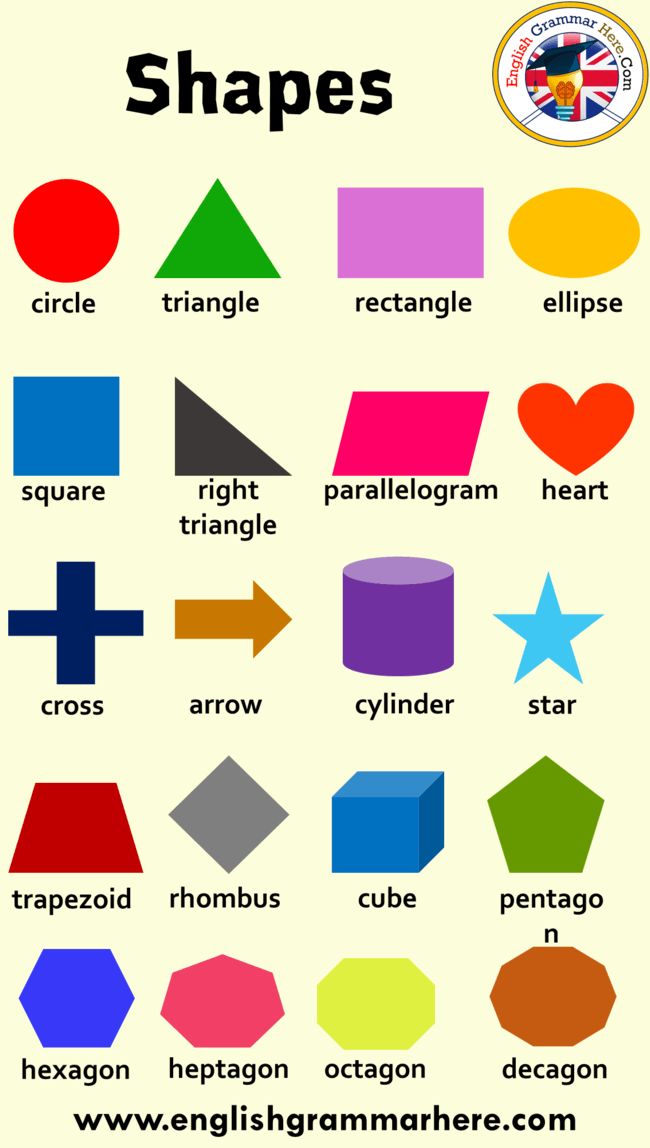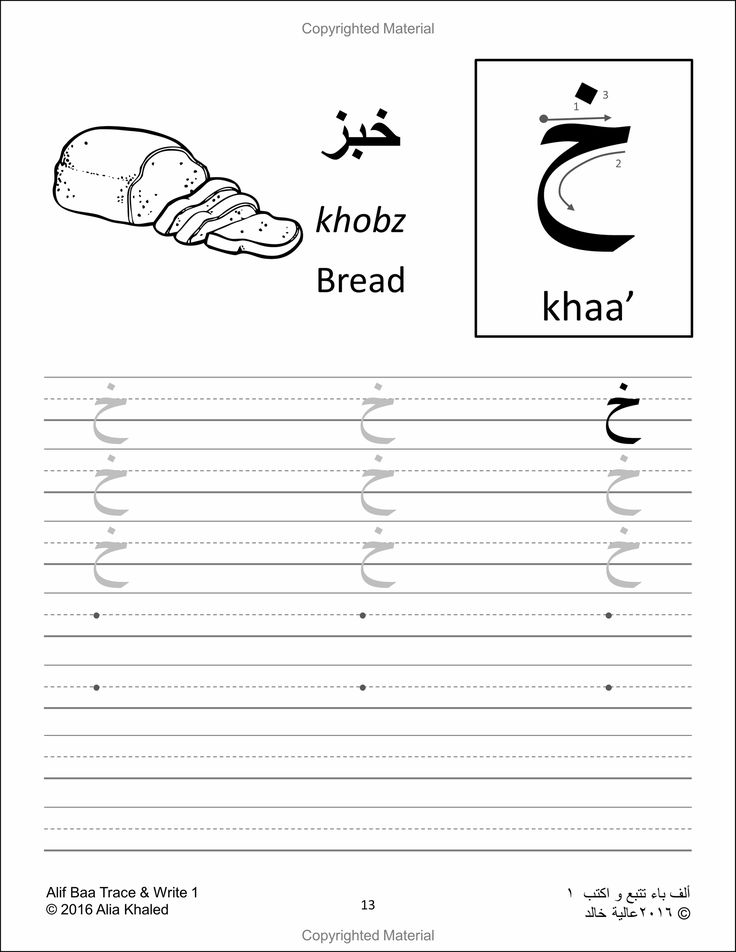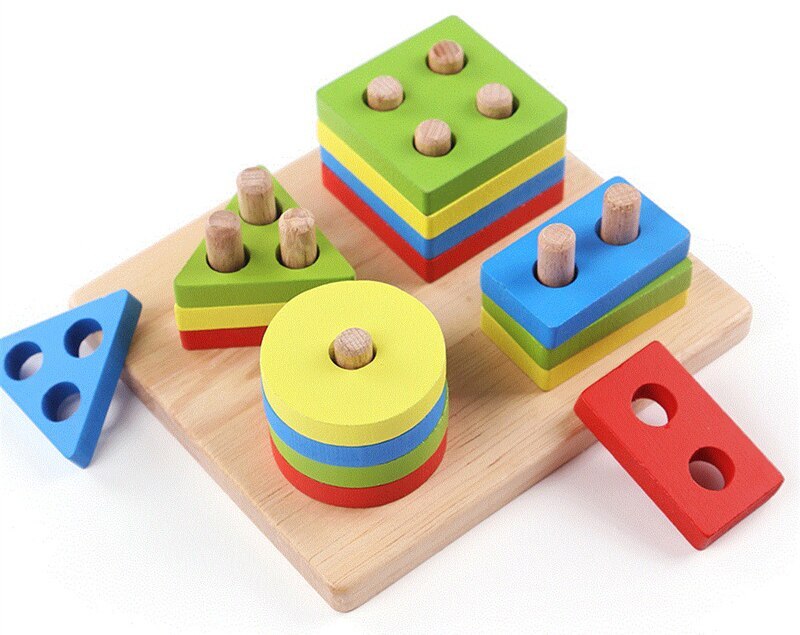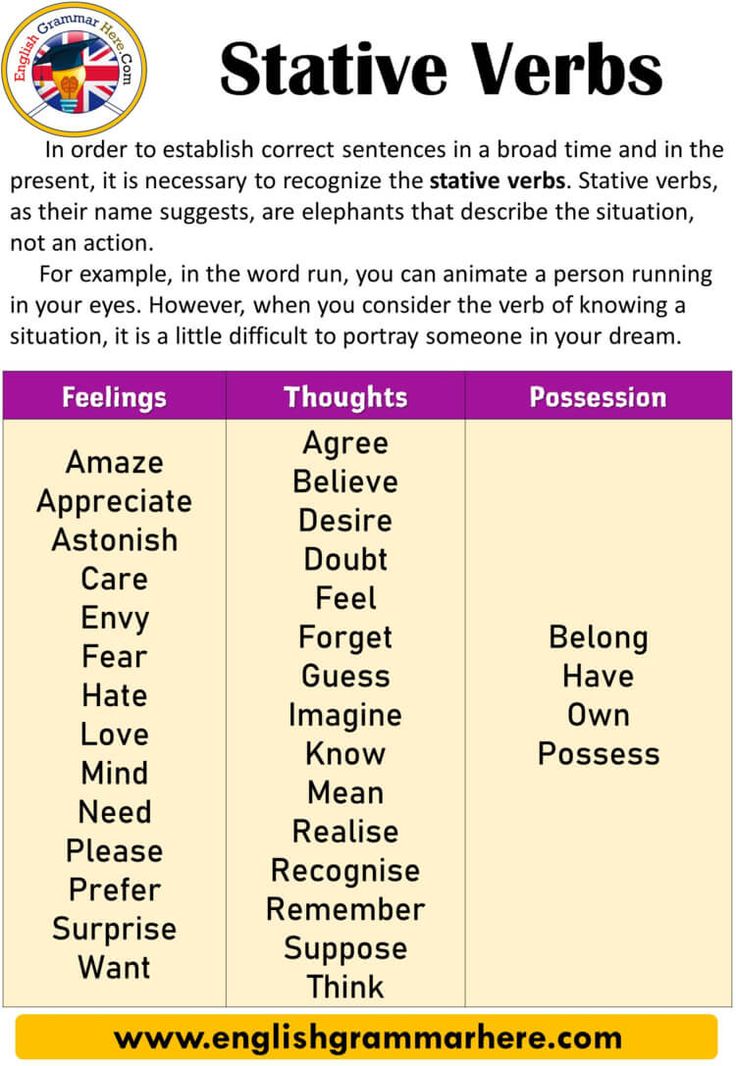Letter sounds activities
Try These 10 Fun Phonics Activities to Teach Letter Sounds to Children
What is phonics?
Phonics is the relationship between letters and sounds as well as the understanding of how those sounds connect to form words.
For instance, the /c/ sound, the short /a/ sound, and the /t/ sound blend together to form the word cat.
What does the research say about teaching phonics?
Research indicates the importance of teaching children phonics as a preliminary step for learning to read.
Research also suggests that systematic instruction which incorporates wordplay (manipulating letters/sounds in words to change the word), writing words, and using manipulatives such as magnetic letters to create words are all effective strategies for teaching phonics.
Additionally, research demonstrates the benefits of applying a multi-sensory approach to phonics instruction.
A multi-sensory approach incorporates sight, sound, touch, and movement into instruction. This helps address a variety of learning modalities, enabling students to better absorb the information.
Ten Fun Research-Based Phonics Activities to Teacher Letter-Sounds
1. Play the game “I Spy.”
In the game “I spy” you pick something that you see and don’t tell the child what it is. The child has to guess what you see.
Here is how you can use “I Spy” to teach letter sounds (phonics):
Let’s say you see a book in the room: You can say: I spy something that starts with the letter B or I spy something that ends with the letter K.
After your child guesses what “you spy” have them tell you the sound the letter makes. If your child cannot guess what “you spy” or does not know the letter sound, provide them with assistance.
You can also do the same thing using letter sounds. For example, if you see a book, you can say “I spy something that starts with (make the sound for b)” or “I spy something that ends with (make the sound for k).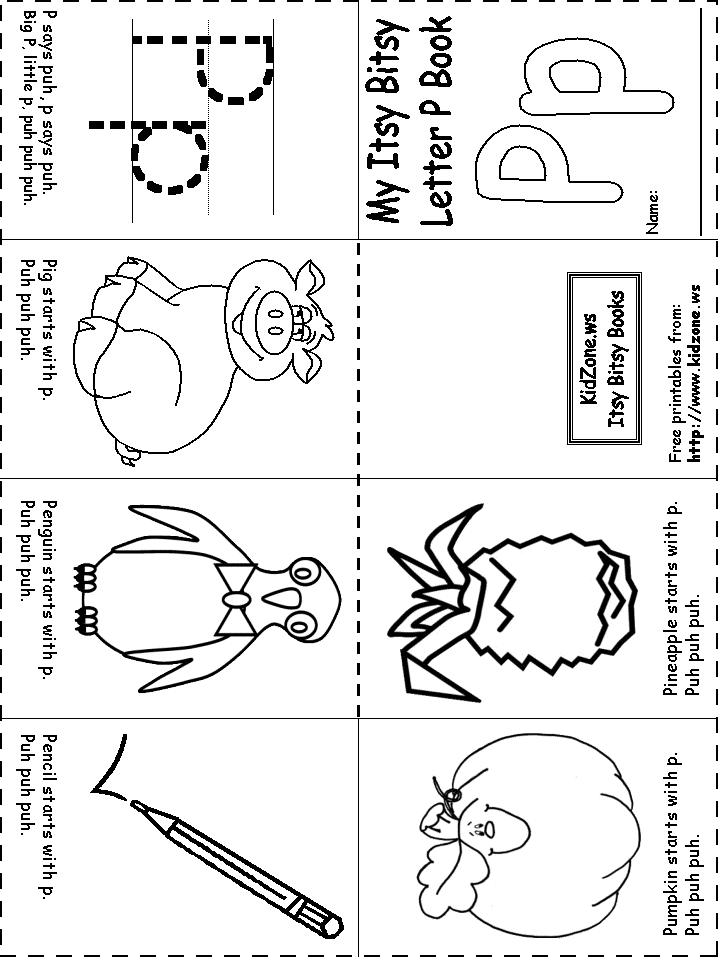
After your child finds the object, have them tell you what the first letter (or last letter) of the object is. Take turns with your child. First you spy, then they spy, or vice versa.
2. Put letters on flashcards for a fun activity.
Put one letter on each card as shown below (create upper case and lower case cards):
Here is a sample activity:
Pick three to four-letter words and scramble them up. For example, if the word is pig, put the letters out-of-order (e.g., ipg) on the table in front of your child.
Put the letters one to two feet in front of your child so she has room to work. Next, give them a sheet of paper with three (or four) spaces for letters on it, like so _ _ _.
Then tell them the word or show a picture of the word and give the instruction (e.g., “I want you to make the word pig on the lines below, using the letters above).
If you have Magnetic Letters, you can use these as well. You can also encourage your child to write the letters in with a pen or pencil.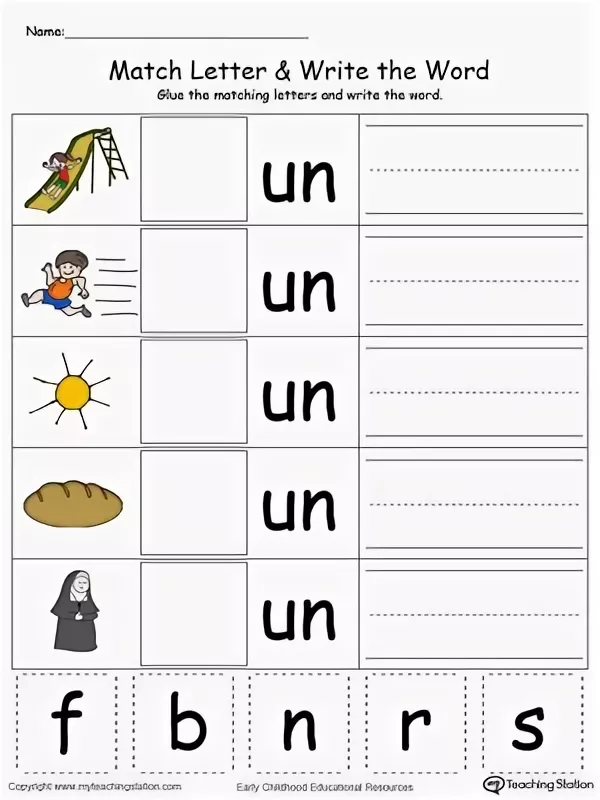
You can do word families to help your child understand that many words are spelled the same way, with only the first letter different. So after pig, try big, wig, and rig.
Rhyming practice is another helpful strategy when teaching kids about letter sounds.
3. Play letter-sound Go Fish.
Make doubles of flash cards. Each player gets five cards and the rest of the cards go in a pile in the center of the table.
Player 1 calls out a letter-sound and asks if player 2 has a match.
If they don’t have a match, tell them to “go fish” which means to choose from the pile. See more detailed rules for how to play Go Fish here.
4. Make your own phonics Bingo game.
Draw a grid or make one on the computer like the one below. (You can also print out a large version of the one below here). You can find more blank grids here).
While the grid above has 25 boxes, you can play phonics Bingo with 9 or 16 boxes also.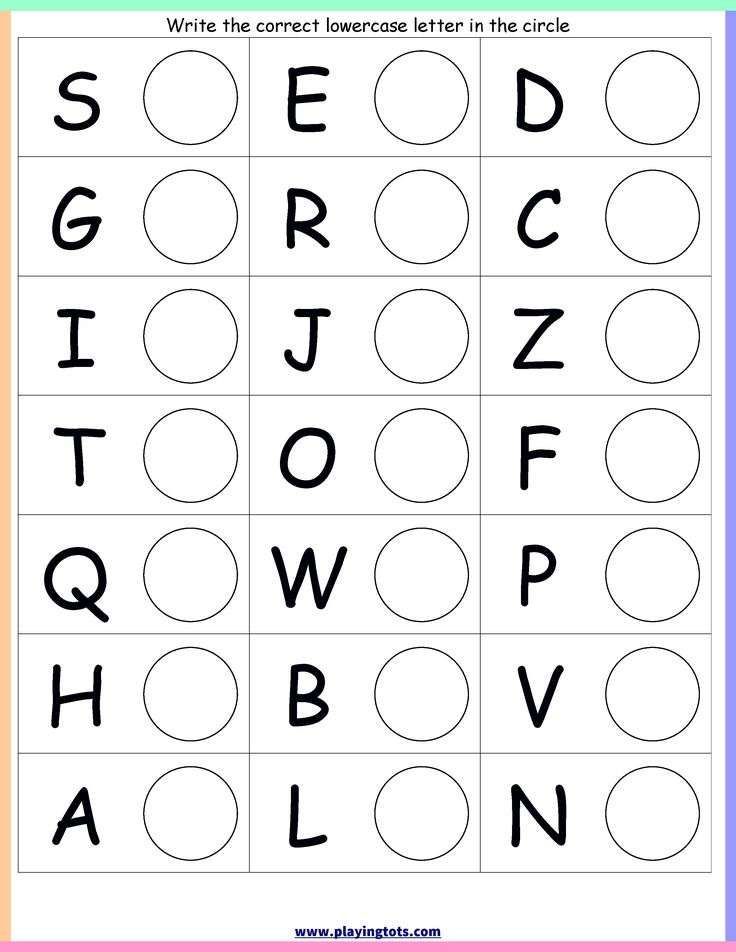
Here are four options for getting pictures into the boxes:
Option 1 – Draw something simple in each box.
Examples of simple drawings for each letter of the alphabet include an apple, a banana, a comb, a door, an egg, a feather, a girl, a hat, an ice-cube, a jar, a kite, a light bulb, a mitten, a nose, an orange, a pan, a queen, a ring, a spoon, a table, an umbrella, a vase, a worm, a xylophone (that one might not be so easy to draw), and a zipper.
Use colors to make it look fun.
Option 2 – Get images from Google Images, print them, cut them out and glue them in the boxes.
Option 3 – Go to Google Images, copy each image by hitting “control c’ or by right-clicking on the image and selecting copy, then paste each picture into each grid box by right-clicking in the grid and clicking paste or by hitting “control v.”
Option 4 – Find and print out ready-made Bingo grids by doing a search for Kids Bingo Grids
You can play the Bingo game four ways:
1 – Call out a letter sound.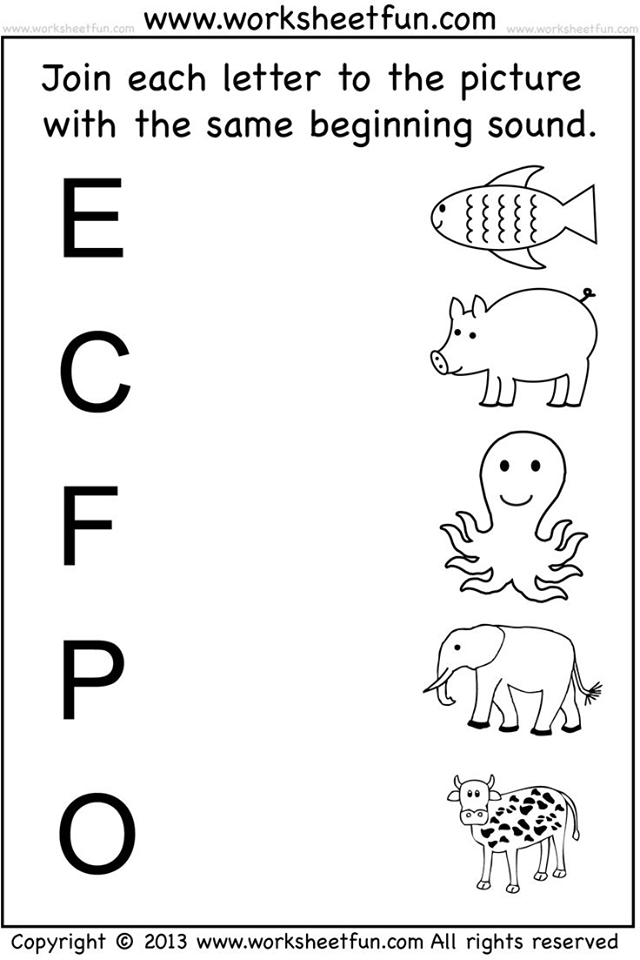 If your child has a picture on her Bingo card that starts with that letter sound, have her put a coin, checker piece, or small piece of paper over the picture (you can cut index cards into small pieces.
If your child has a picture on her Bingo card that starts with that letter sound, have her put a coin, checker piece, or small piece of paper over the picture (you can cut index cards into small pieces.
This will work better than regular paper because the pieces will be heavier and stay on the Bingo card better).
2 – Call out a letter. If your child has a picture on her Bingo card that starts with that letter, have her cover the picture.
3 – Call out a letter sound. If your child has a picture that ends with that letter sound, have her cover the picture.
4 – Call out a letter. If your child has a picture that ends with that letter, have her cover the picture.
When your child fills up a row, up, down, or diagonally, she gets Bingo (she wins).
5. Make flashcards with a picture on one side and the letter the picture starts with (or ends with) on the other side
You can draw the pictures yourself or make flashcards using pictures from Google Images.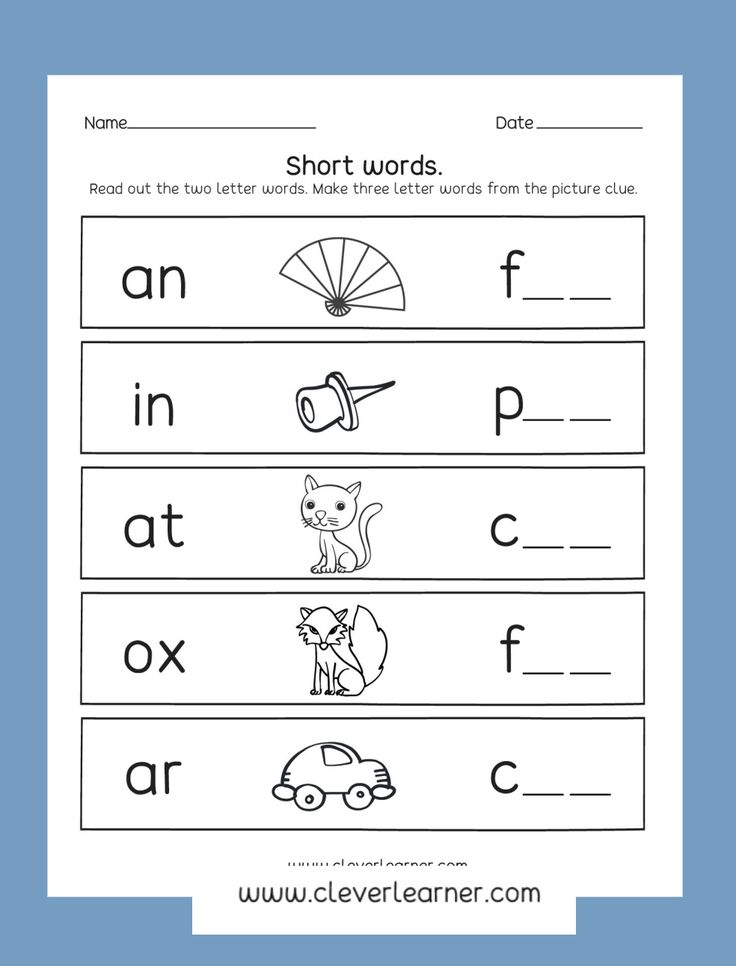
To make a flashcard from Google Images, go to the Image, copy it, “right-click” on it and click copy or hit “control c.” Then go to a word document and paste (right-click and click paste or “hit control v.”).
Then print out the pages, cut out the picture, and write the corresponding letter on the back.
If you know how to insert tables, you can put several pictures on the page in table boxes, print the page, cut out all the pictures, and put the letters on the back. Here is an example:
Show your child a picture and ask them to tell you the letter (or letter sound) it starts with (or ends with). If they are correct, let them know and show them the back of the card. If they are not correct, give them two more tries.
If they do not get the letter or sound, show them the back of the card and tell them the letter and sound (then enunciate the sound as you say the word), have them say the letter/sound back to you twice and shuffle the card back in the pile. Repeat.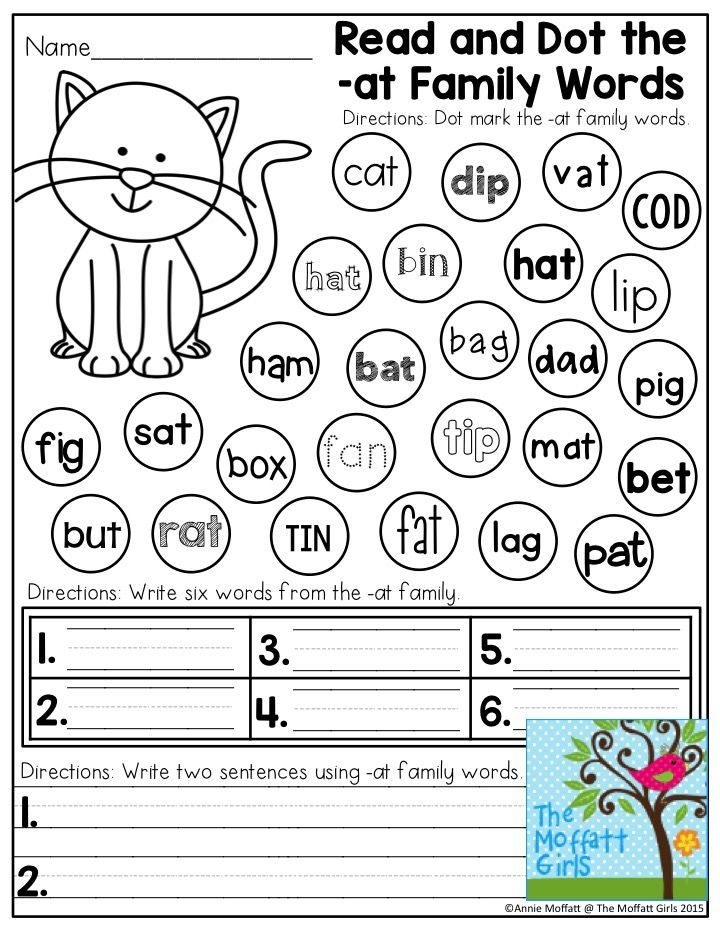
6. For children who have a lot of energy, turn a phonics lesson into a movement activity.
Tape four letters onto the wall as shown in the image below:
Call out a letter sound and tell your child to run to the letter that makes that sound, touch it and run back. Spice it up. Here are some examples:
-Hop to the letter that makes the sound
-Skip to the letter that makes the sound
-Tip Toe to the letter that makes the sound
7. For another movement activity, put tape on the floor, with a letter on each piece of tape.
Tell your child to start with their feet on a certain letter (e.g., start on letter A), then tell them to jump to different letters, using the letter sounds.
For example, “Jump to the letter that makes the sound (insert letter sound).”
See an example below:
As your child becomes more independent with his letter sounds, you can make the letters spell actual words. For the word cat, have three pieces of tape, C, A, T.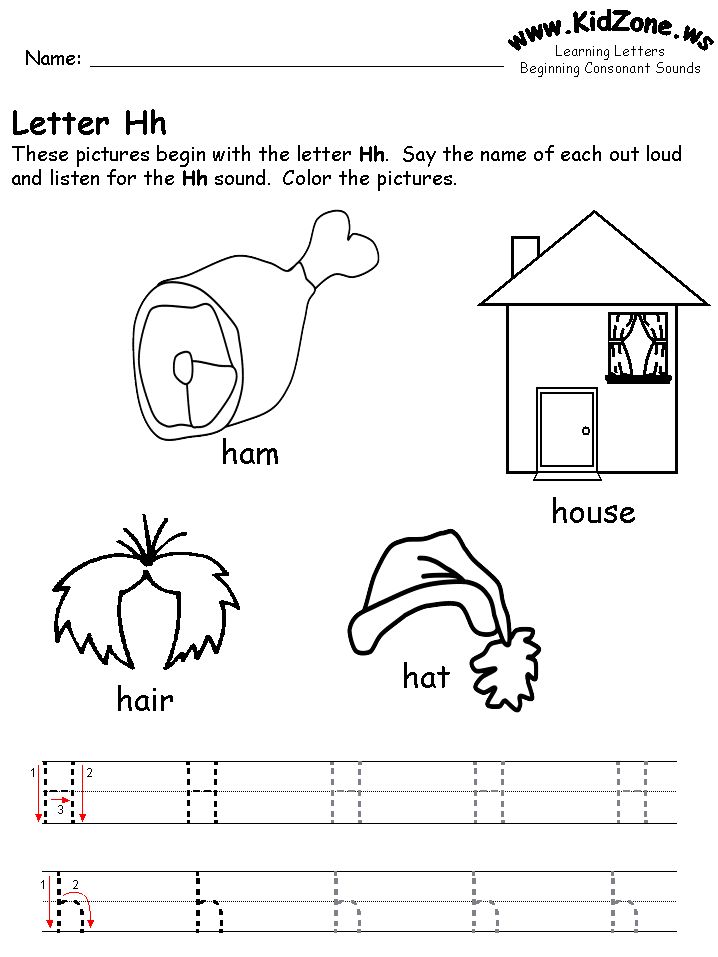
Tell your child to start at the C, then jump to the next letter in Cat, and then the last letter.
To make it more challenging, have your child spell the word backwards, by starting with the last letter and jumping in order until they get to the first letter.
Mix up the game with upper and lower case letters. The example above has three letters, but you can use as many pieces of tape and letters as you want.
Start out with a few and add more if your child is making good progress.
8. Make a worksheet, using words and pictures with your child’s favorite characters, foods, animals, etc.
You can draw the worksheets by hand or use tables in Microsoft Word. For a three-letter word, make a table with five columns and one row.
Put the picture of the word in the first box of the table (you can draw in the pictures or copy and paste them from Google Images). Put the letters in the other boxes, but leave one letter out. Have your child fill in the missing letter.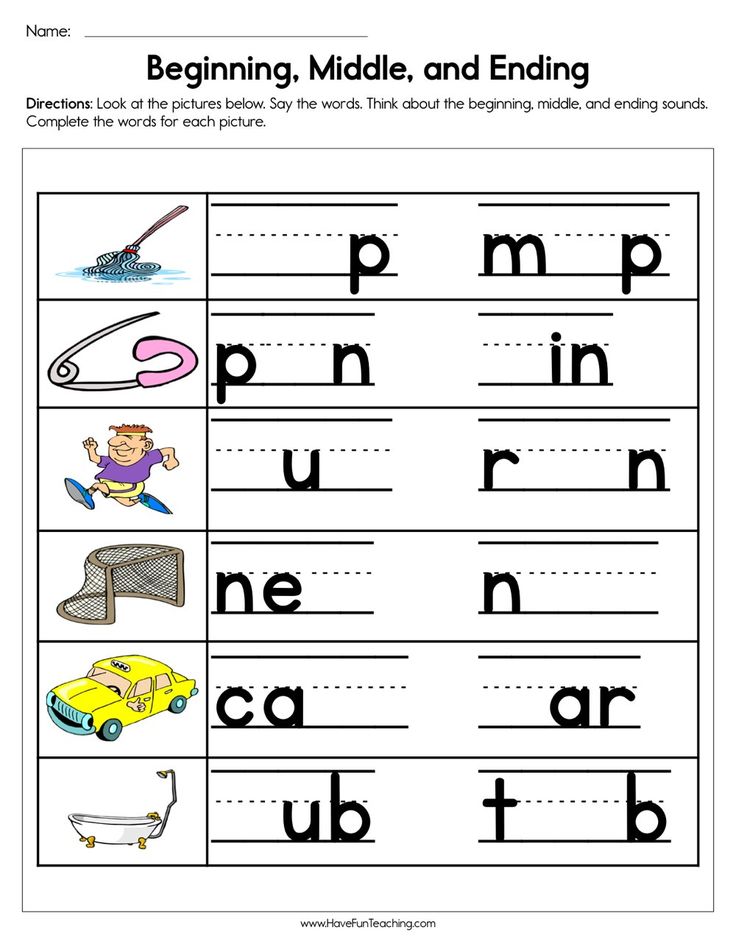
Here is an example of the worksheet:
Click here to print out your own version of this sheet.
For children who may have trouble solving this worksheet, try providing them with a letter bank to see if that helps.
See an example of a worksheet with a letter bank below.
Click here to print out your own version of a phonics worksheet with a letter bank.
9. Have your child paste letters on paper as you call out the sounds.
You can use the letter flashcards you made, like in number 2.
You can use this activity to teach your child how to spell words. Draw lines or boxes on the paper so your child knows where to paste the letters.
You can give your child the exact number of letters in the word, or throw in some extra letters to make it more challenging.
Call out the first sound in the word, have your child pick the correct letter, and paste it on the first line.
Then have them do the next sound, and so on, until the word is complete.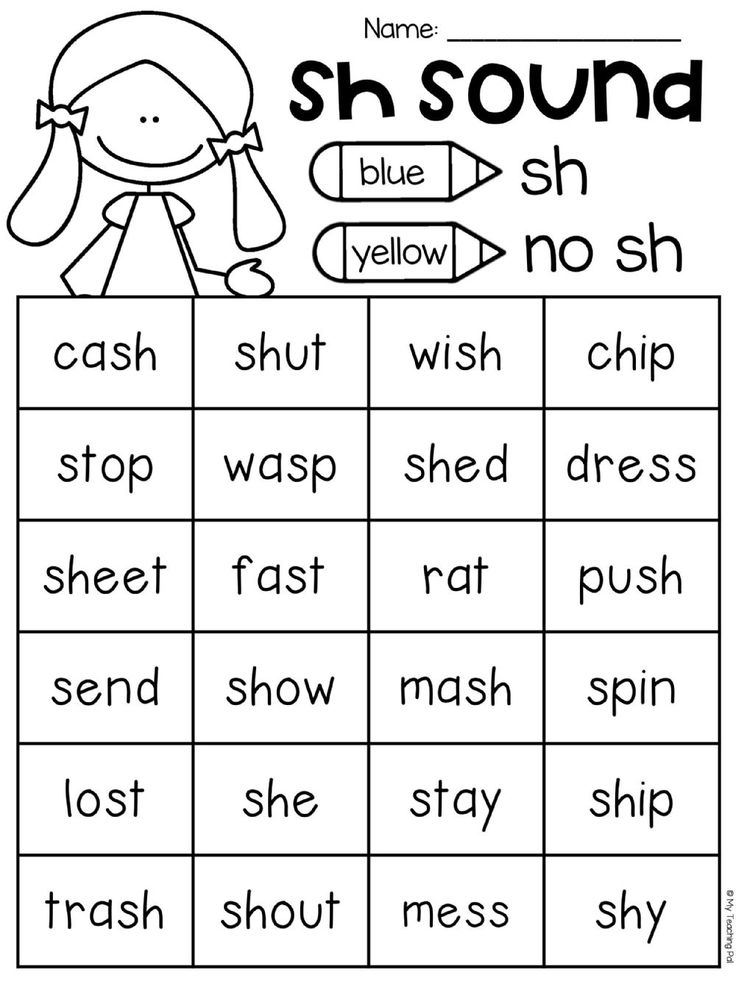
Supervise the activity, providing assistance as needed.
When your child is done, hang up their work to show them that you are proud of their effort.
You can also use this idea to teach a child how to spell their name, such as the sample in the image below.
10. Sing the alphabet sound song.
The tune is similar to the traditional alphabet song.
Here is a great example by Kidstv123. You can make up your own version as well.
What else can you do to help your child learn letter sounds?
If your child is significantly struggling with learning letter sounds or acquiring other academic skills, despite consistent practice and guidance, talk to your child’s school and/or doctor.
They can refer you to the appropriate professionals to determine what might interfere with your child’s progress and if additional strategies could help.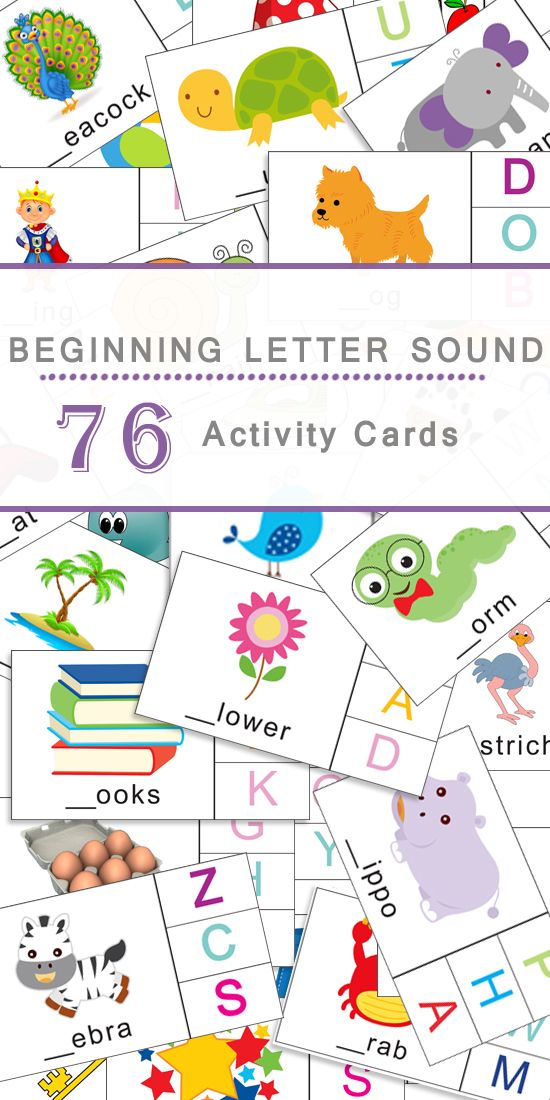
Additional Information About Teaching Phonics to Children
Keep in mind that the activities in this article are recommendations. Please do not try to pressure a child into participating in any of these activities.
This can lead to your child feeling frustrated, and possibly shying away from phonics (letter-sound) practice.
Remember to always stay calm when working with a child or student, even if you think they should be getting something that they are not getting.
If you get frustrated with them, they may start to feel anxious, angry, inferior, stupid, etc. which will lead to a less productive learning session.
Keep practice sessions short (2 to 10 minutes for younger children or children who get easily frustrated and 10 to 15 minutes for older children or children who can work for longer periods without frustration), unless the child is eager to keep going.
For suggestions on ways to encourage children to complete tasks or assignments they do not want to do, read the following articles:
- 3 Ways to Use Timers to Encourage Homework and Chore Completion
- How to Use Schedules to Improve Children’s Behavior
Video Presentation
Education and Behavior – Keeping Us on the Same Page for Children.
Rachel Wise
Rachel Wise is the author and founder of Education and Behavior. Rachel created Education and Behavior in 2014 for adults to have an easy way to access research-based information to support children in the areas of learning, behavior, and social-emotional development. As a survivor of abuse, neglect, and bullying, Rachel slipped through the cracks of her school and community. Education and Behavior hopes to play a role in preventing that from happening to other children. Rachel is also the author of Building Confidence and Improving Behavior in Children: A Guide for Parents and Teachers.
“Children do best when there is consistency within and across settings (i.e., home, school, community). Education and Behavior allows us to maintain that consistency.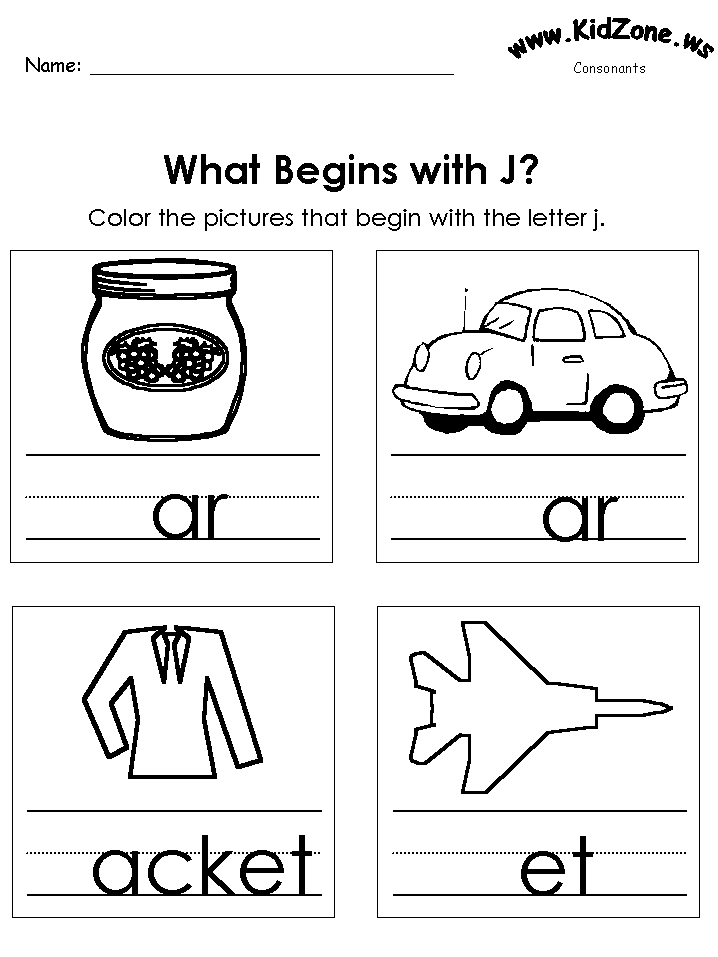 ”
”
www.educationandbehavior.com
Learning Letter Sounds - PreKinders
By Karen Cox | Affiliate Disclosure | Filed Under: Phonological Awareness
These games help pre-K children practice Letter Sound learning in a fun, hands-on way.
Sound Cups
Use 26 disposable clear punch cups and label each cup with a letter. Letter cup labels can be downloaded below. Collect a set of small trinket objects (you can ask parents and friends to send things in), such as plastic lizard, small block, watch, plastic frog, bandaid, necklace, button, dice. Place the trinkets in a basket. Children sort each trinket into a letter cup by its beginning sound.
You can use all 26 cups at one time, or select 3-4 letter cups at a time for children to focus on. When searching for items to go in the cups, look for dollar store mini toys (especially packs of animals and bugs), look at doll house miniatures, browse craft stores for mini items.
Download: Letter Cup Labels
Erase the Sound
Draw a picture on a dry erase lap board. In the example below, I drew a snowman. Call children up one at the time to erase something that begins with something in the picture. In this picture, children can erase something that begins with H (hat), something that begins with B (buttons), something that begins with N (nose). Continue until everything is erased.
In the example below, I drew a snowman. Call children up one at the time to erase something that begins with something in the picture. In this picture, children can erase something that begins with H (hat), something that begins with B (buttons), something that begins with N (nose). Continue until everything is erased.
Mystery Bag
Place three objects beginning with the same letter in a bag (such as ball, bug, and button for B). Have a child pulls each item out of the bag and name each item. Have the class guess the “mystery letter”.
Guess Who?
Say three words and have the kids guess whose name begins with the same sound as those three words. For example, call out:
- lake
- lemon
- lamp
The class would guess Levi. If you have more than one child in your class (maybe Levi, Lucy, and Layton) who start with that letter sound, the class can name all of them.
I have prepared a list of words for each letter that you can use for your students.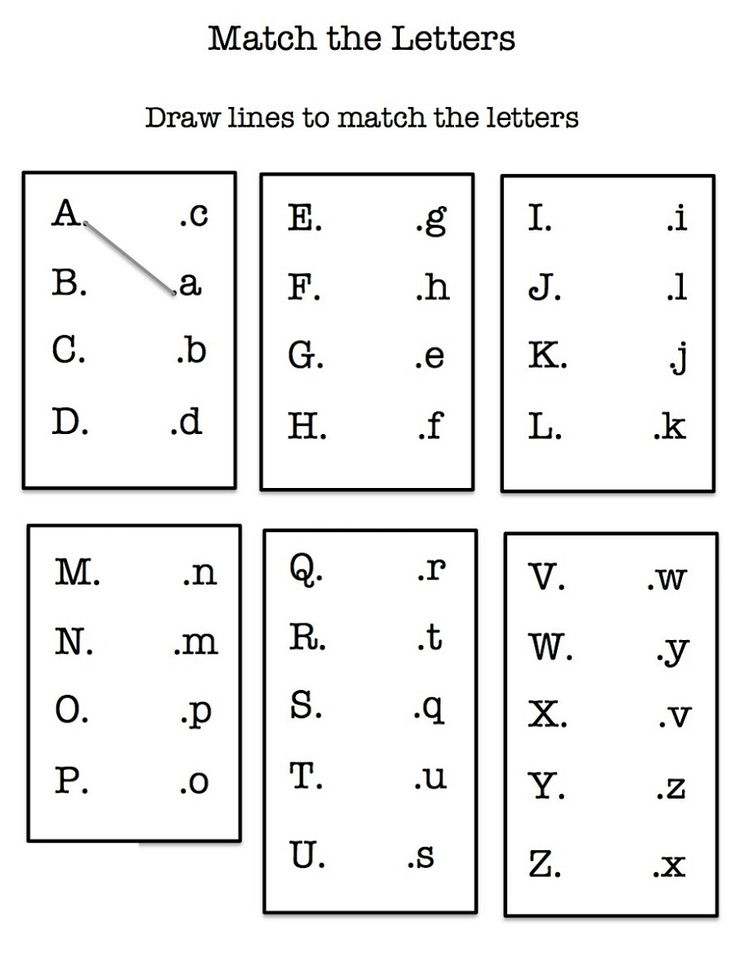 Download the list below.
Download the list below.
Download: Beginning Letter Sounds List
Monster Names
Have kids stand, stomp, and growl when you say their “Monster Name”. Replace the first letter of each child’s name with the letter M. For example, Braden’s name would become “Mad Monster Maden” and Ashlyn’s name would become “Mad Monster Mashlyn”.
Say Two Words
Say two words, and have kids stand up if the words begin with the same sound. Have them sit down if they do not. For example,
cat – cow (stand up)
hat – goat (sit down)
Letter Sounds Listening Games
Children listen for beginning sounds in words and use bingo markers to stamp a letter each time they hear the letter sound. Get the printable game here: Letter Sounds Listening Games.
Letter Sounds Activity Cards
Children look at the picture, say the word, and find the letter that matches the beginning sound. They mark the cards by clipping it or marking it with a chip. Get the printable game here: Letter Sounds Activity Cards.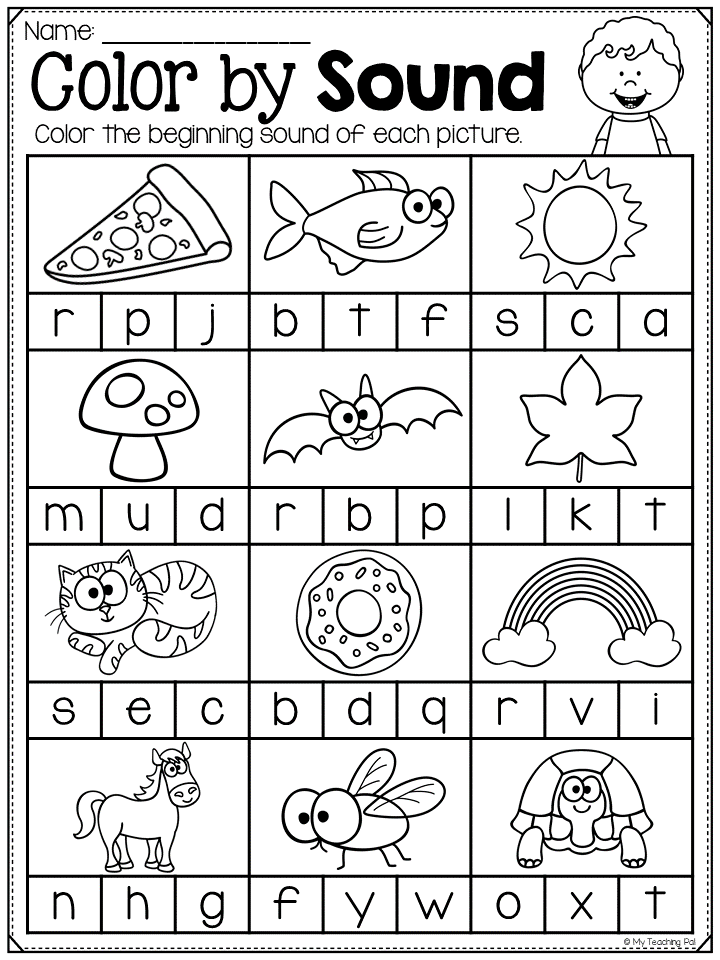
Letter Tile Mats
Children match letter tiles to the pictures on the mats by identifying the beginning sound of the words. Get the printable game here: Letter Tile Mats.
More Resources
These are available in my shop.
About Karen Cox
Karen is the founder of PreKinders.com. She also works as a full-time Pre-K teacher in Georgia. Read more...
SEARCH
0015Subject
Meta -subject
Personal
Acquaintance with sound [O] and letters of the phonemic rumor
(teach to distinguish each sound in speech) Development of speech, thinking, sustained attention, memory, enrichment and expansion of the student's vocabulary
Foster diligence, norms of correct behavior, ethical norms, love for nature
1. STAGE 1 Actualization of knowledge
Teacher's activity
I.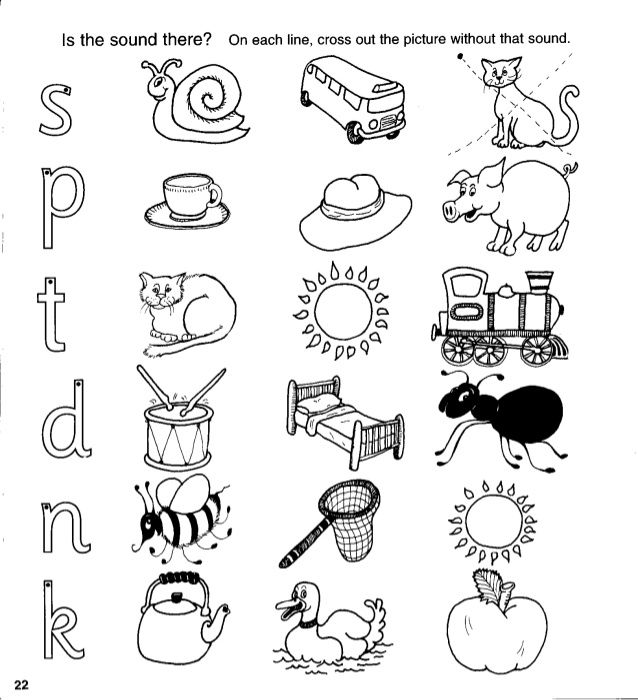 Organizational moment.
Organizational moment.
Attention! Check, my friend,
Are you ready to start the lesson!
Is everything in place?
Is everything all right?
Book, pen and notebooks!
We have such a motto,
Everything you need is at hand.
-What are sounds and letters?
-What two groups are sounds divided into?
-What sounds are called vowels?
-What sounds are called consonants?
-What sound and what letters have we already studied?
- Sound [a] vowel or consonant?
Let's play a game Say a word.
1. Everything we say is…
2. Our speech consists of…
3. A sentence consists of ...
4. A syllable consists of ... or
Student activities
- We pronounce and hear sounds, and we see and write letters.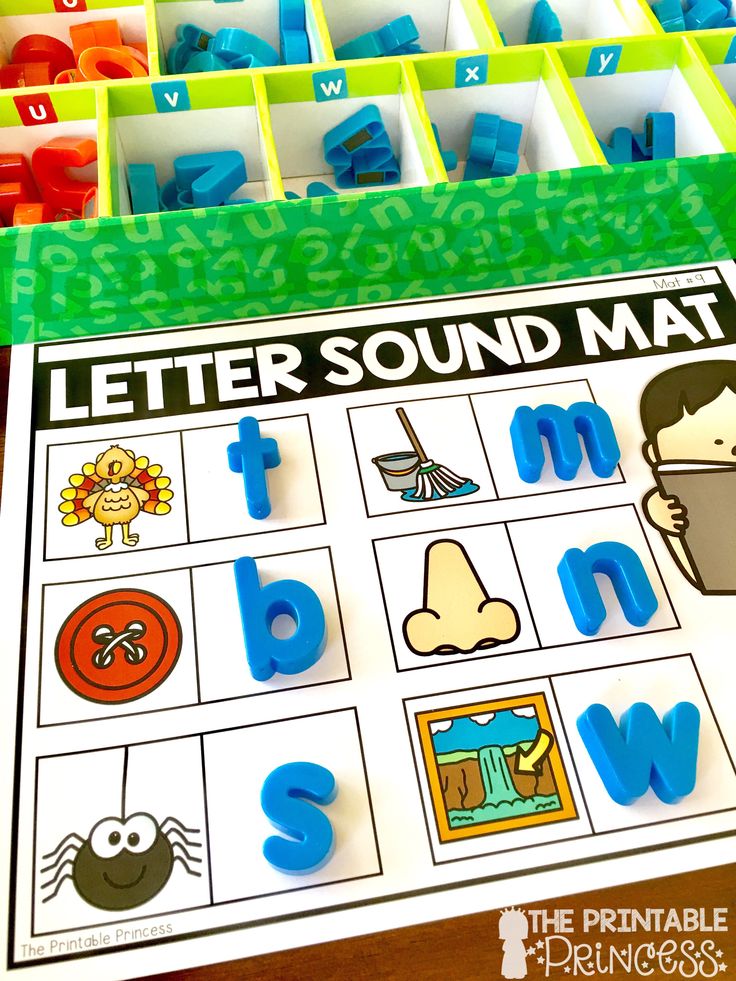
- Sounds are divided into vowels and consonants.
- These are sounds that are formed only by the voice, during the pronunciation of which the air freely passes through the oral cavity.
- These are sounds, during the formation of which the air meets some kind of barrier in the oral cavity.
- sound [a] and letters A, and
- sound [A] vowel
- Speech
- sentences
- Closures
-svukov or letters
2. Stage Creating problematic situations
Teacher activity
Game “Tell me a word”.
Warm fur coat in rings
Wears a quiet ... (sheep)
Drops of the sun early in the morning
Appeared in a clearing.
This is in a yellow sarafan
Dressed up .,. (dandelion)
Oranges and bananas
They love very much .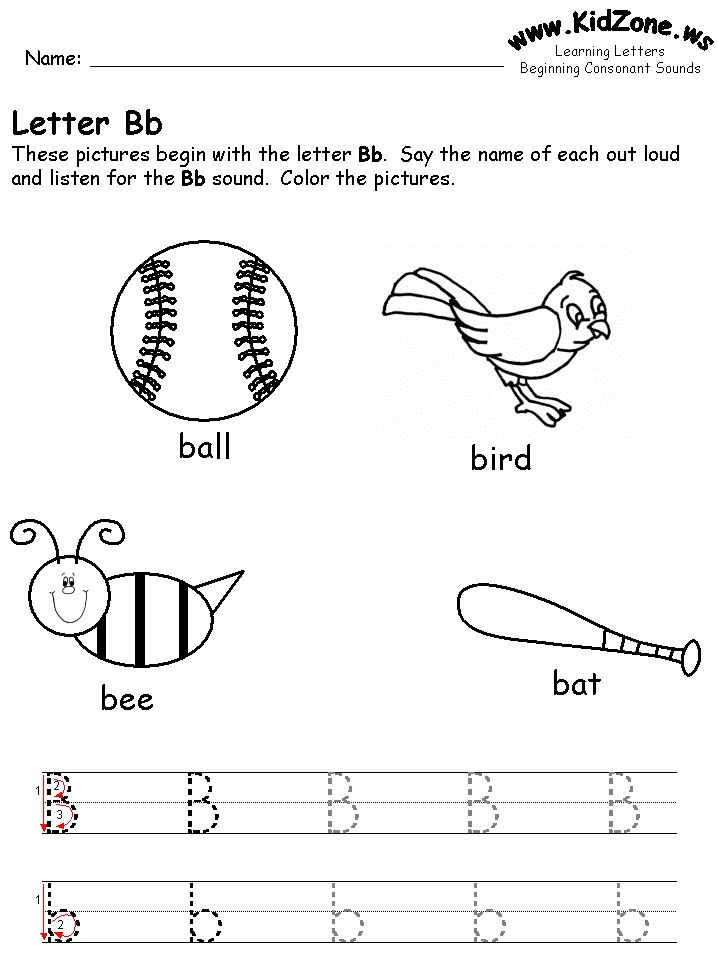 .. (monkeys)
.. (monkeys)
-What do the guess words have in common? (Begin with [o])
-What sound is this?
Game “Go on - don't be bored! »
Children formulate the topic of the lesson, continuing the teacher's suggestions.
In the lesson we will get acquainted with the sound ... [O],
Find out what letter denotes this sound. Let's learn how to distinguish the sound in speech ... [o].
Find a letter in the tape of letters. Determine a place.
Working on a new theme.
Determining the place of sound and letters in a word.
I will tell you a secret,
There is no more dreamer O.
Did you guess what
Will the story go here now?
Let's dream together with her!
And let's start right now.
Are you ready? Help.
Look for the letter O in words.
Do not yawn during the lesson.
(Children name words with the sound [o] at the beginning, middle, end of the word.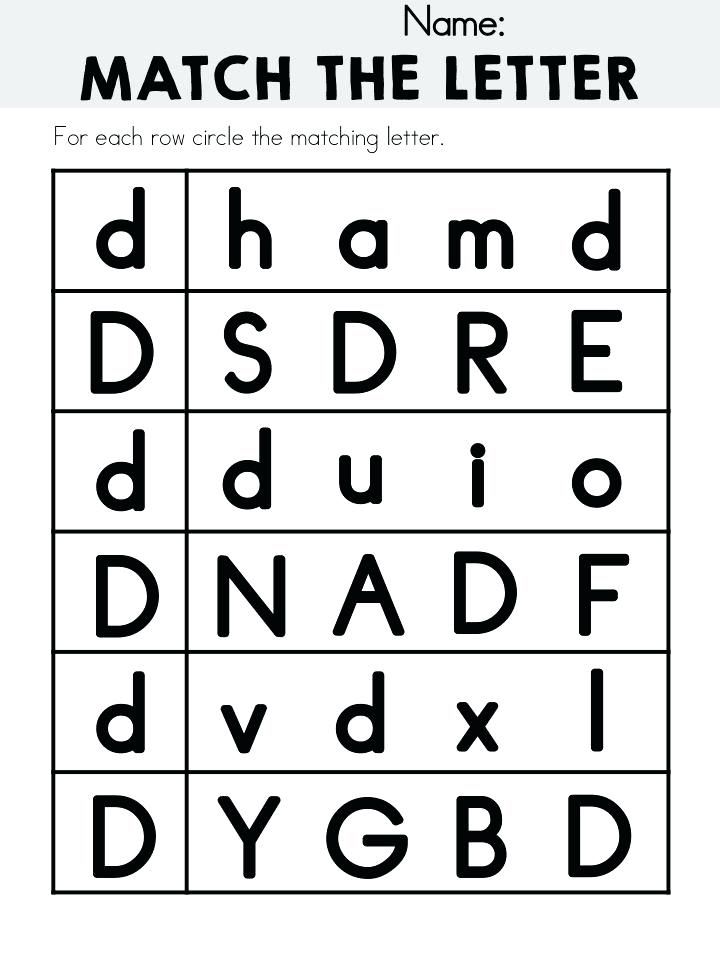
Today we will get acquainted with the new sound [o] and the letter O, denoting it in writing
Student activities
- sheep
- dandelion
- monkeys
- Start with [o])
- sound [o]
- sound [o]
- sound [o]
3. STAGE of goal-setting - formulation of a practical particular cognitive task or definition of an educational task of a generalized type.
The main tasks of the teacher. Formation of reflective skills to determine the boundary between knowledge and ignorance;
• mastering generalized ways of acquiring new knowledge: methods of setting and defining a problem, formulating a particular cognitive task , selection of known and new components in the problem;
• formation of cognitive motives for learning activities: the desire to discover knowledge, acquire skills;
Teacher activity
Provides "conflict" material, creates readiness for upcoming activities.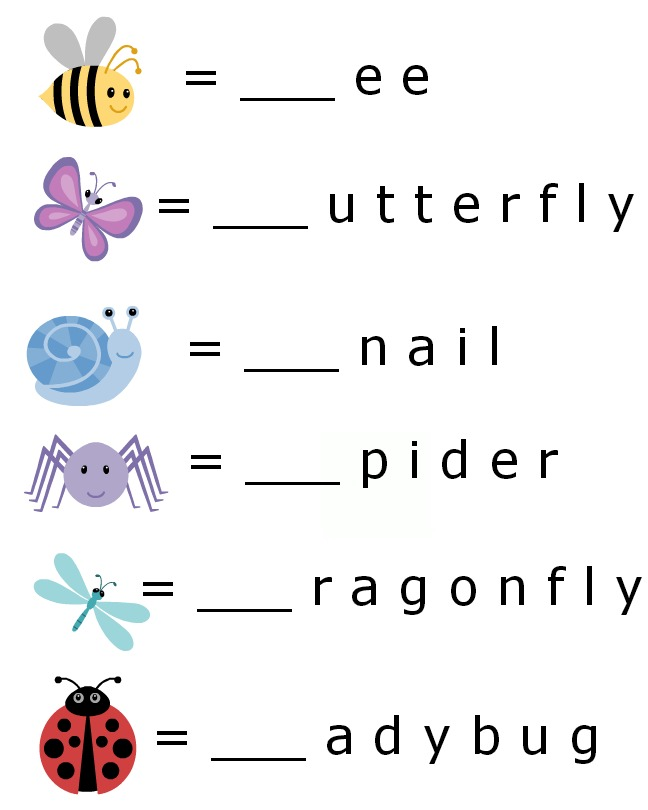
Students' activities
Show cognitive initiative. The main thing - awareness of the emerging intellectual difficulties, contradictions, lack of knowledge, formulation of heuristic questions, tasks. Awareness of the purpose of the upcoming activity.
4. STAGE of planning.
Teacher's activities
We have already studied the sound [a] and the letter A. Let's remember how we did it and make a plan for today's lesson.
Student activities
In the previous lessons we made sentences based on the picture.
Choose one word from a sentence.
Analyzed this word.
Divide the word into syllables.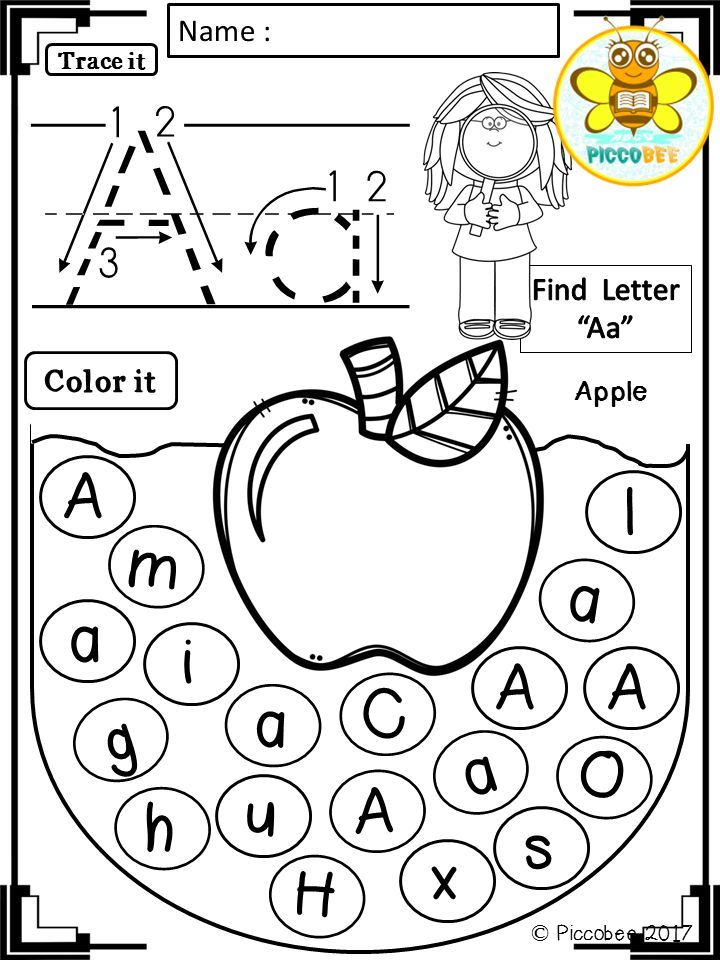
Analyzed this word.
Then the sound in this syllable was isolated.
And they made up other words with this sound.
STAGE 5 "Discovery" of new knowledge.
Acquaintance with sound sound [o]
Let's try to make sentences on this picture.
2) We have made several proposals. Let's choose one sentence in which we heard the sound [o].
3) Now we have to analyze the proposal and draw up a diagram.
- Which word shall we choose for analysis?
4) a) Let's carry out a syllabic analysis of the word "Vegetables" based on hearing
How many syllables are there in this word?
First we will pronounce this word by syllables:
First syllable: “o”
Second syllable: “vo” (This syllable is pronounced together)
Third syllable: “shchi” (This syllable is also pronounced together)
- Which syllable is stressed?
- Say the first syllable in unison? -Listen to how it is pronounced.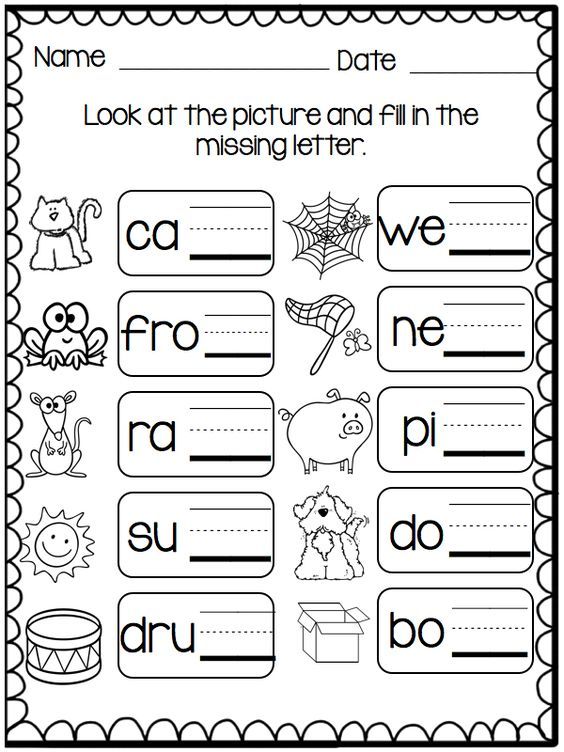
What is it, vowel or consonant?
- Why?
I remind you that the vowel sound is indicated in red.
4) b) We will carry out a syllabic analysis based on scheme
Let's take the words,
Getting to know the letters O, o
Name the words with the sound [o]
(Sun, car, cake, wasps, cloud, elk, umbrella, cobra, raspberry.)
- Who knows which letter represents the vowel sound [o].
- Why did I show you two letters Oh, oh?
- Give examples of capital O being used.
- What does the letter o look like?
Look at the wheel,
And you will see the letter O.
In the Old Dolo Dupo
(A. Shibaev)
- Work with a purely
and on SlaeidaName and determine the position of sound in words.
- The vowel sound is indicated by the vowel o.
The capital letter O is used when we call names, surnames, names of cities, rivers, animal names.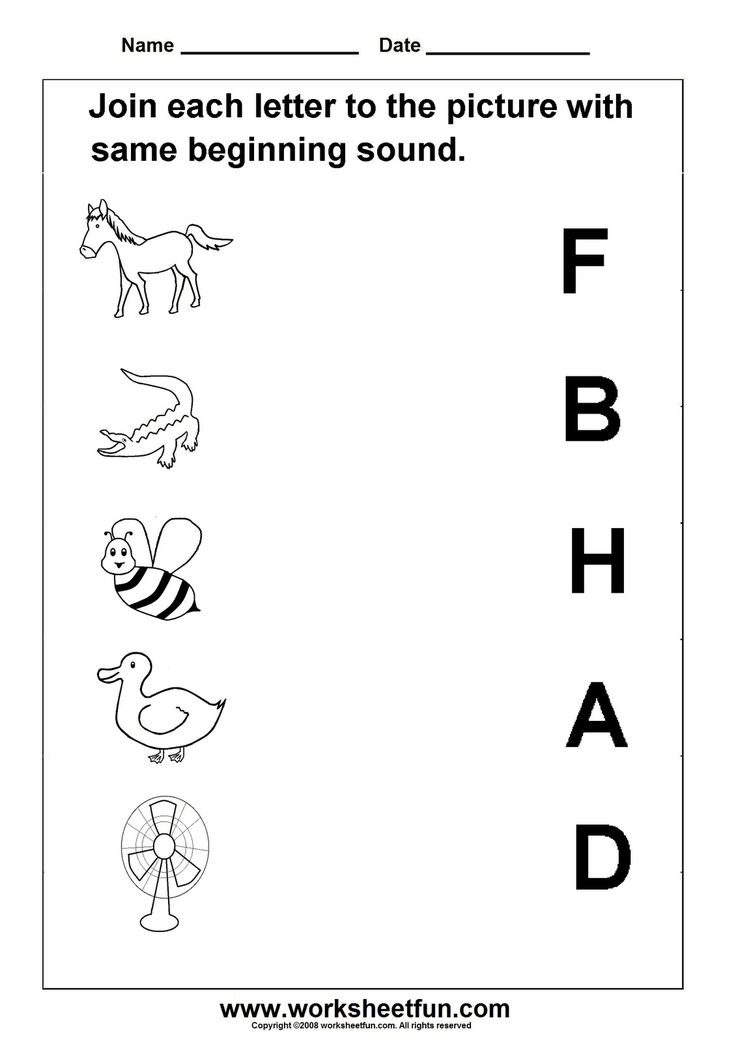
Olya, Oleg, Ostrogozhsk, Oka, Orlik.
The letter o looks like a wheel, circle, plate, sun, ball.
Say the first sound in the word vegetables. (Slide 7)
- Name this sound.
- Say it in front of a mirror. How are the visible organs of speech located during its pronunciation.
- Describe the sound.
- Name again what objects were depicted.
- Is there a sound o in other words besides vegetables?
- Let's pronounce each word separately and determine what the sound will be before the sound o.
- Conclude what the sound o means when combined with a consonant. (Scheme)
- Who is the most attentive? Name the objects, highlight the sound o in words.
(Sun, car, cake, wasps, cloud, elk, umbrella, cobra, raspberry.)
- Who knows what letter denotes the vowel o.
- Why did I show you two letters Oh, oh?
They work according to the scheme in the textbook
Articulation of sound .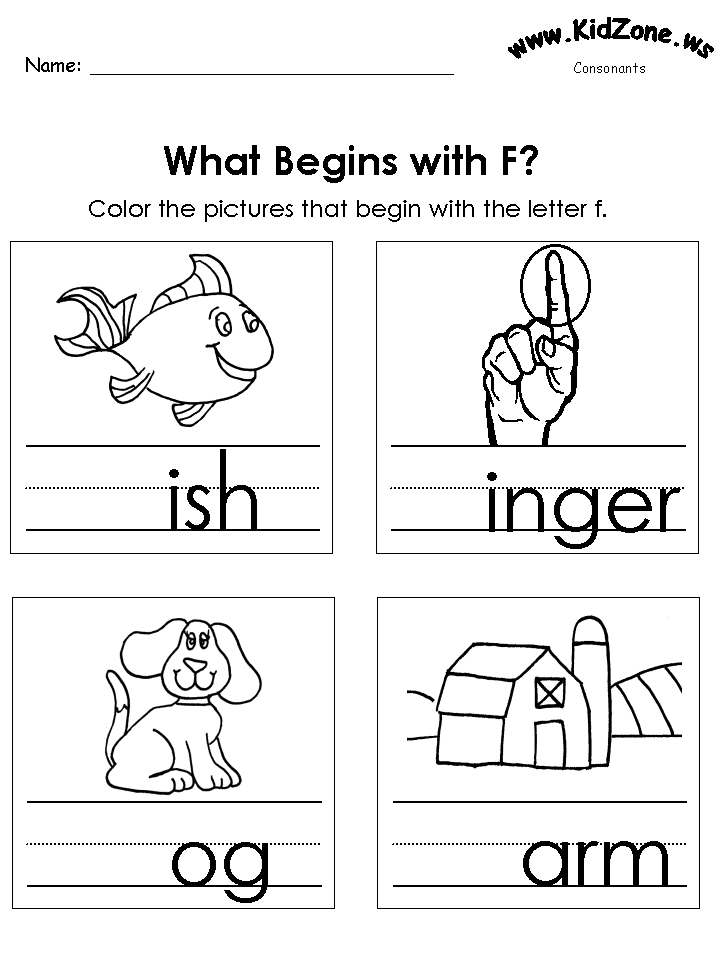
Let's take a mirror and see what happens to our lips when we pronounce the sound O.
What do our lips look like? Let's all sing a song together with the sound about .
Sound characteristic.
Sound about stretches.
Is there an obstacle when pronouncing the sound o ?
What sound is it?
Well done guys, you have done this task.
Development of phonemic hearing .
I say the word, highlighting the sound O, and you indicate the place of the sound. At the beginning, in the middle or at the end of a word.
Rose, cloud, vegetables, coat.
Student activities
ABC work
- Mole, vegetables
Mole digging vegetables
Mole drinking tea
Mole has a garden
Mole digging vegetables.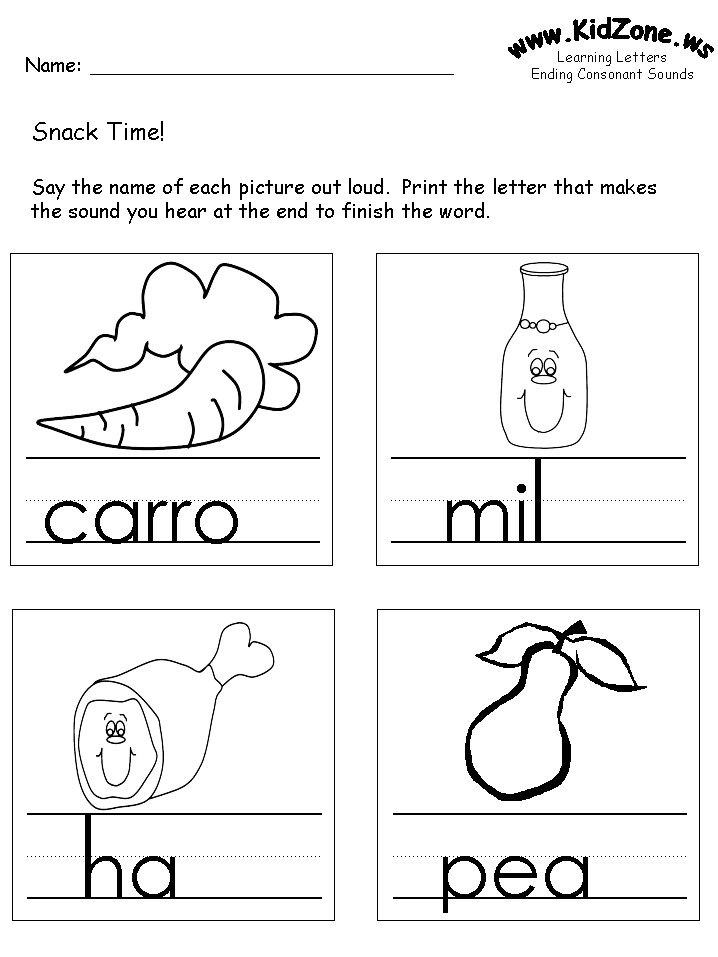
|____ ____ ____ .
Vegetables
- this word has 3 syllables
- “o”
- “in”
- “shchi”
-1 stressed syllable
-О-О-О-О
-О-О-О-О
Pronounce.
- The mouth is open, rounded, the sound passes freely.
-If the sound passes freely without encountering obstacles, it can be sung, which means that the sound is a vowel.
- When pronouncing a sound, the exhaled air in the oral cavity does not encounter obstacles.
(Sun, car, cake, wasps, cloud, elk, umbrella, cobra, raspberry.)
The sound O is a vowel (air comes out freely through the mouth without encountering obstacles, is sung), indicated by a red chip.
Rose - the sound o is in this word
Cloud - the sound o is in this word
Vegetables - the sound o is in this word
Coat - the sound o is in this word
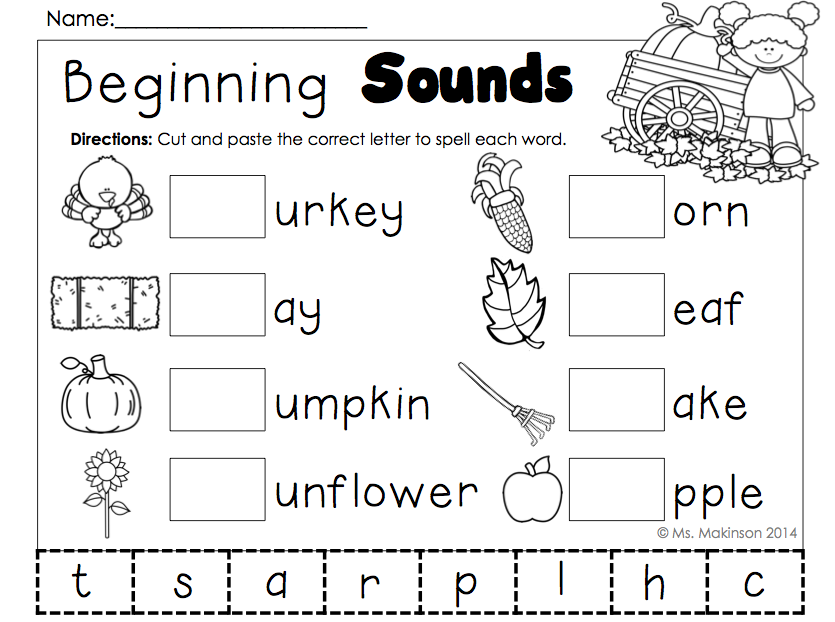 Application of new knowledge .
Application of new knowledge . Teacher activities
Work on the pages of ABC
Vocabulary exercises
- Open your textbook to page 29. Look at the illustration. Make up a story based on the illustration.
- What is the title of this story?
- Look at the diagram. What can you say?
- Make a four-word sentence.
This is a sentence outline with four words.
Work on proverbs
- See what is written below the plot illustration.
- How many sentences were written?
- Find the letter O in the first sentence, count how many letters O are in this sentence.
- Find the letters o in the second sentence, count how many letters o are in this sentence.
- Find the letters o in the third sentence, count how many letters o are in this sentence.
- Let's listen to what is written in the first sentence.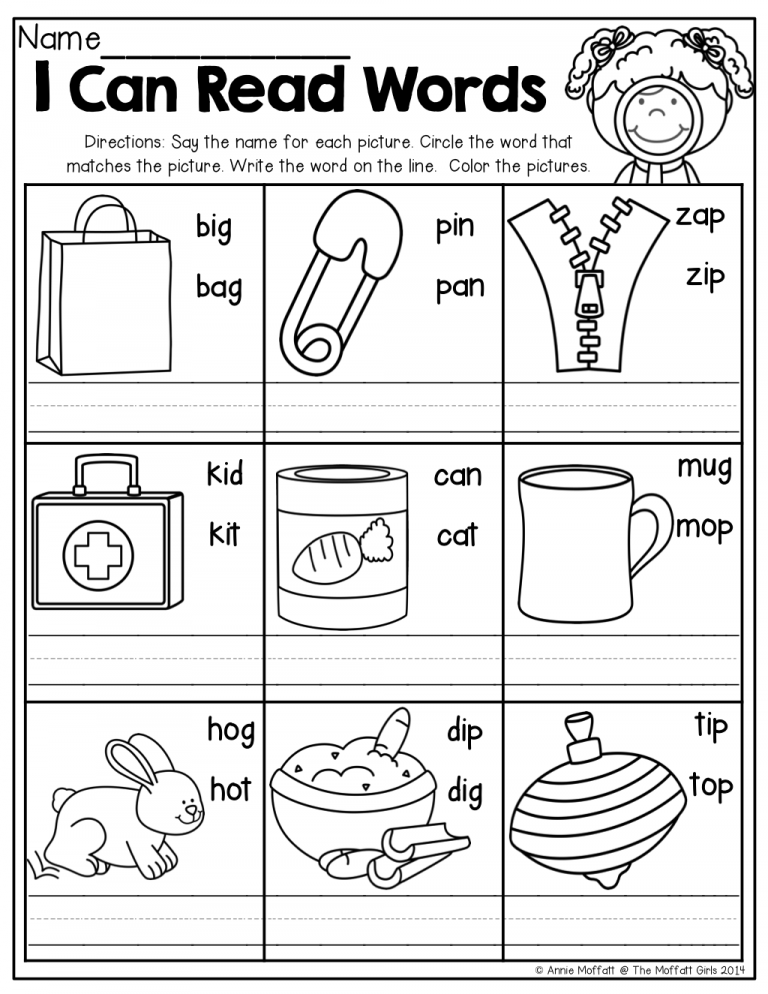
- This is a proverb. A proverb is an expression that reflects folk wisdom on some act or behavior.
- What does this proverb teach us?
- Let's listen to what is written in the second proverb.
- What does this proverb teach us?
- Let's listen to what is written in the third proverb.
- What does this proverb teach us?
- Let's say the proverbs in chorus with a clear pronunciation of the sound o.
Sentences are written here because each begins with a capital letter, the words are written separately and there are dots at the end of the sentences.
Three sentences are written here because there are three dots.
In the first sentence there are 8 letters O.
In the second sentence there are 6 letters O.
In the third sentence there are 4 letters O.
(Children who can read read.)
This proverb teaches us decency, honesty, and the ability to keep our word.
(Children who can read read.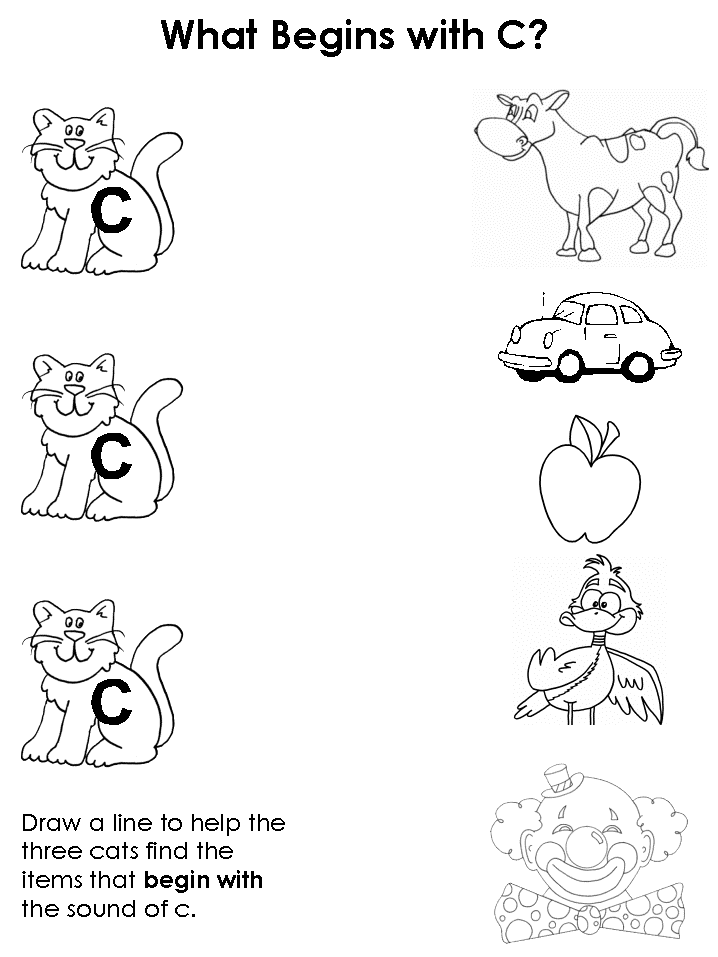 )
)
This proverb says that it is good for a person when his mother is near.
They speak.
The activity of the teacher
- “Autumn has come”
- “Harvesting”
- “The mole harvests for the winter”
- The mole digs carrots with a shovel.
- The mole drinks tea at home.
It is fundamentally important in this case:
1) Alternate forms of work: individual, pair, group with a general conversation;
2) Invite students to tell about the results of the assignment so that monologue speech develops.
Algorithm for the student to prepare an answer to a productive question :
1. Understand the task. 2. Get information (from text, diagrams, etc.). 3.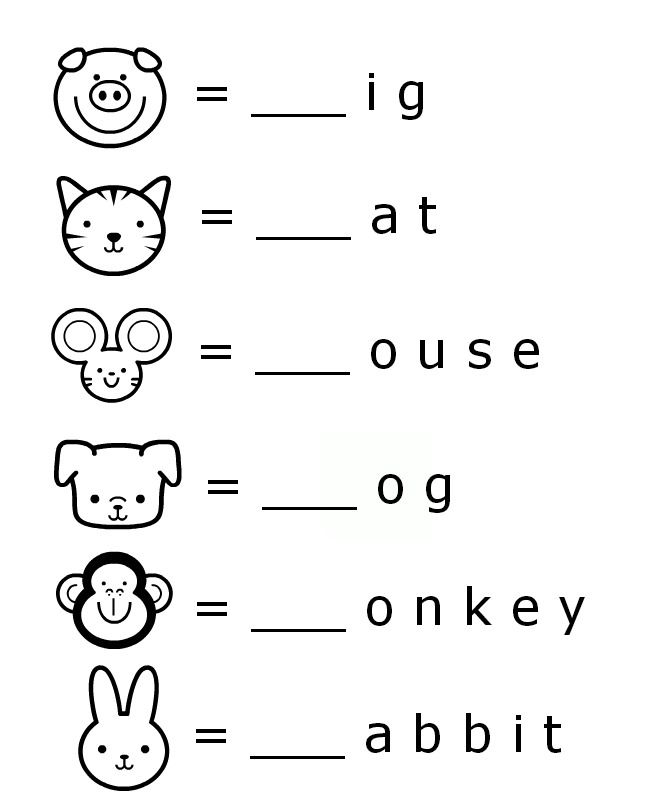 Convert information in accordance with the task (find a pattern, derive a rule, a concept). 4. Mentally formulate the answer. 5. Give a detailed oral answer: “I believe that ..., because, firstly ..., secondly ...”.
Convert information in accordance with the task (find a pattern, derive a rule, a concept). 4. Mentally formulate the answer. 5. Give a detailed oral answer: “I believe that ..., because, firstly ..., secondly ...”.
STAGE 7 Reflection (outcome of the lesson).
The main tasks of the teacher: Formation of the ability to objectively assess the measure of one's progress towards the goal of the lesson. To evoke empathy in connection with the success or failure of comrades.
Teacher's activities
Offers to recall the topic and objectives of the lesson, correlate it with the work plan written on the board, and evaluate the measure of one's personal progress towards the goal and the success of the class as a whole
- What answer can we give to the main question of the lesson? Whose versions were confirmed? How would you rate your work?
- Using your new knowledge .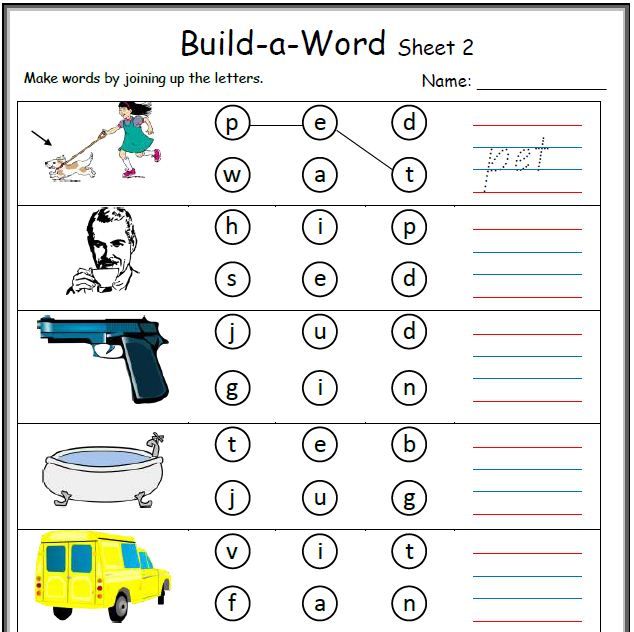 .. (a task is given for productive application - a story, a drawing, a diagram, etc.)
.. (a task is given for productive application - a story, a drawing, a diagram, etc.)
Students' activities and tasks of the lesson, mark the most difficult and most liked episodes of the lesson, express value judgments. Determine how far you have progressed towards your goal.
They mark successful answers, interesting questions of classmates, group members. They can note the productive work of the group.
The presence of learning motives in the lessons, situations or problems that lead to the setting of learning tasks, the activity of students aimed at solving them, provide knowledge that helps students build new knowledge in their experience and change their previous experience, and they ( knowledge) are a means of changing the student himself.
STAGE 8 Homework Subject-specific. The main thing is not to transfer to the house what “did not have time” in the lesson. You always need to keep up with the minimum, and if you don’t have time, you can safely skip the maximum.
You always need to keep up with the minimum, and if you don’t have time, you can safely skip the maximum.
Open lesson in 1st grade on teaching literacy. Letters "С", "с", denoting consonant sounds [с], [с´]
Subject
Letters "С", "с", denoting consonant sounds [с], [с´].
Lesson 9 objectives0822
introduce students to the new letters "С", "с", and sounds [s], [s'].
Lesson objectives:
- Subject:
- form an idea of the sounds [s], [s'] as consonant sounds;
- to learn to distinguish the sound [s], [s '] and the letter "C, s" from other sounds and letters;
- learn to read and write syllables, words with a new letter;
- Metasubject:
- Cognitive:
- to cultivate cognitive interest, interest in reading, independent work skills.
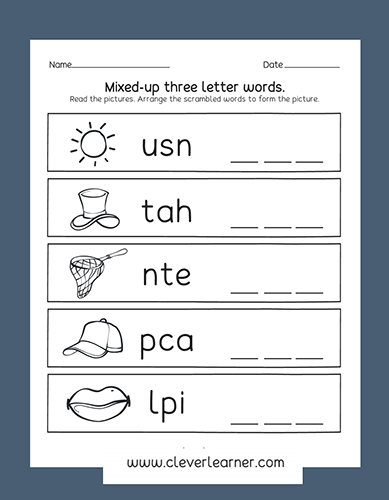
- Communication:
- to form the ability to negotiate and come to a common decision in joint activities.
- Regulatory:
- to form the internal position of the student to correctly allocate his time.
Planned results:
- subject
familiarity with the letter C, with and the sounds that it stands for; development of phonemic awareness. - Metasubject:
- Regulatory:
- control and evaluation of their actions in cooperation with the teacher, classmates.
- Cognitive:
- possession of general methods for solving educational problems; correctly construct a speech statement.
- Communication:
- constructive interaction with each other, the ability to negotiate, come to a common opinion; learning to work in groups.
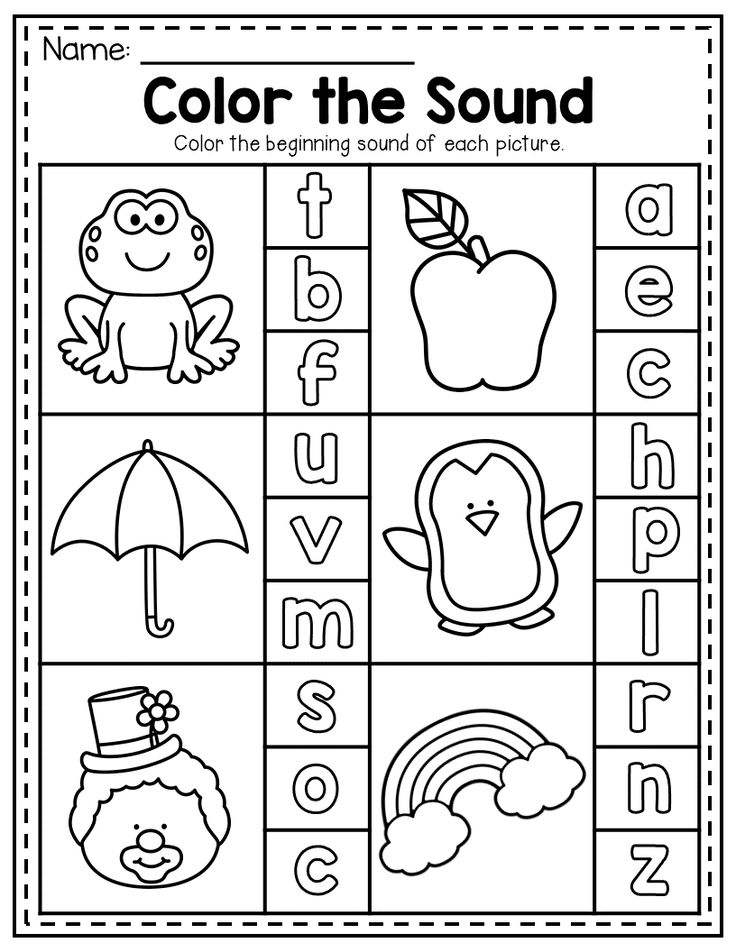
- Personal:
- manifestation of cooperation skills, self-determination, adequate acceptance of information.
- Modern educational technologies:
- system-activity approach, gaming technologies, health-saving technologies, ICT technology.
- Lesson type:
- lesson "discovery" of new knowledge.
- Forms of organization of activity:
- frontal, group, steam room.

